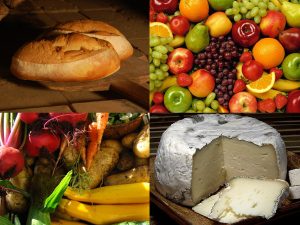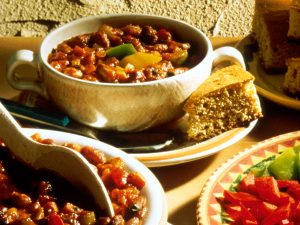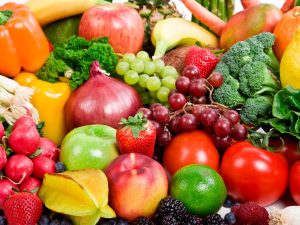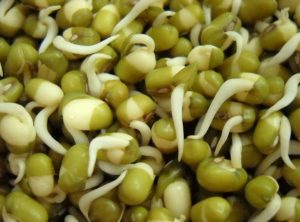Raw / living food - introduction
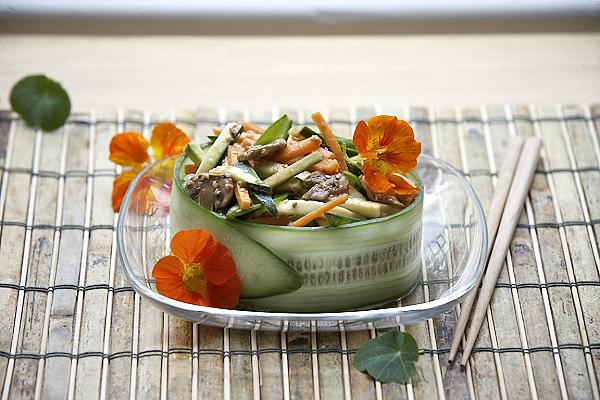
“You don’t have to eat 100% raw foods to be healthy, but you do have to eat raw foods to be healthy” – Kevin Gianni
Contents
What is raw / living food?
‘Raw’ food is food that hasn’t been heated to more than 40-45°C, and typically includes grains, pulses, seeds, fruit, spices, nuts, flowers, green leaves, roots, stems, seaweeds, herbs, fungus and yeasts. By ‘living’ we mean very fresh – ideally straight from the garden – so that, like the living plant, it’s still full of enzymes and water. This of course means that ideally, raw / living food diets will contain mainly local, seasonal, organic ingredients.

Tasty and nutritious courgette pasta with marinara sauce – get the Italian experience with raw ingredients.
Although many people involved in the raw food movement are vegetarian or vegan, meat, seafood, eggs and dairy can also be eaten raw. Examples of raw meat include jamon serrano, chorizo and salami; raw fish – bacalao, sushi and sashimi; raw eggs – mayonnaise; and then of course there’s honey, which contains enzymes from the bees as well as from the nectar, increasing its health benefits.
Raw food doesn’t have to be cold by the way. 40°C is warm enough for a soup.

Using a spiral slicer to cut vegetables into sprials, and to make vegetable pastas.
History
Back beyond a certain point in history, our ancestors would have eaten only raw food. Some time after the use of fire, they would have discovered that it changes the consistency and flavour of foods, and cooking was born. Throughout history there have always been people and places where food was predominantly raw, including monks and yogis; and Japan has always had its raw fish, fermented foods and pickles. The modern raw food movement started in the 20th century, took off in the 60s, and there has been a boom in the 21st century. In the US, it is a huge movement; in Europe it’s not as big, but is growing fast.

A selection of raw sweet nibbles, made from pineapple, figs, nuts and carob.
One of the pioneers of this recent boom is Victoria Boutenko, whose family in the 1990s were overweight and suffering from various health problems including diabetes, rheumatism and asthma. She studied ancient human and primate diets, but found the quantities of green leaves too unpalatable. So she made smoothies by mixing them with fruits to improve the taste. She persuaded the whole family to change to a 100% raw food diet overnight, and the health problems disappeared (although she no longer advocates a 100% raw diet). Her experiences, plus several books have contributed greatly to the raw food cause. Her son has a Youtube channel with videos on, among other things, raw food, wild edibles and green smoothies.
What are the benefits of raw / living food?
- First, a very obvious environmental benefit – every raw food meal you eat means less energy consumed for cooking, with all the emissions associated with it.
Tips for a healthy raw food lifestyle.
- Using fresh, local, seasonal, organic ingredients reduces the need for transport, freezing and pesticides (however, some raw foodies use a lot of exotic, imported ingredients that cancel out other environmental benefits).
- Raw food is all about aiming for the maximum nutritional value from food (which is actually the purpose of food when you think about it), not just filling up. Raw / living food contains vitamins, antioxidants, minerals, proteins, phytochemicals, water, enzymes and fibre.
- Cooking can destroy vitamins, minerals and proteins, and almost all enzymes. They start to be destroyed at 45°C, and the higher the temperature and longer the cooking, the higher the percentage destroyed.

Sprouts – from the top: alfalfa, mung bean and soya bean.
- Because cooked food has often lost nutrients, our bodies tell us to eat more, which can lead to obesity.
- Enzymes help break down food to be absorbed by the body; the older people get, the more digestive problems they tend to have, and the more they need enzymes – but enzymes are almost entirely destroyed by cooking.
- Cold pressed oils are raw; when you cook with them they become saturated and contribute to increased cholesterol levels.
- Raw foods contain a lot of water. If you drink water, it passes through your body quickly; if it’s in your food, it stays in the intestines longer, and your cells get a constant supply. Our bodies are 60-70% water, and we need to be hydrated all the time to stay healthy.
- Raw food contains more fibre, which helps food pass through the intestines and stops constipation.

Most of us eat raw food already, in the form of salads, coleslaw, fresh fruit and nuts etc.
Studies have confirmed that increased consumption of raw foods can lower the risk of cancer and inflammation, and improve digestion and skin. However, some studies have shown that cooking can release nutrients as well as destroy them, and that people on 100% raw food diets have been found to have reduced bone mass. And so we don’t encourage a 100% raw food diet, although it could be good for some people. We’d encourage a greater proportion of raw food in the diet, for the reasons outlined above.
What can I do?
You can slowly add more raw food to your diet – either as a proportion of meals, or entire raw meals. You could have a cooked meal with a raw starter, side dish or dessert. The more you do, the more of the above benefits you get. You can have soups, salads, pasta, lasagne, pizza, flat breads, wraps, curries, ice-creams, sorbets, nut and seed milks and much, much more. See resources – you can find recipes online, attend a course for inspiration and ideas, or buy a book or two.
Green smoothies: a blend of fresh fruit and green leaves – easily digestible and full of vitamins and minerals.
Here are some useful techniques:
Dehydration
Leave in the sun (like sun-dried tomatoes) or in a dehydrator; dehydrated foods should only comprise a small part of your diet, as they don’t contain water.
Maceration
Chop vegetables, herbs etc, put them in a pre-prepared oil-based sauce and leave to soak overnight.

The Japanese have consumed raw fish in sushi and sashimi dishes for centuries – low in fat, high in protein, minerals and vitamins.
Massage
Rub and squeeze with your hands into an oil and salt mix (and maybe vinegar) – ideal for green leaves like kale, which are difficult to eat raw. The oil gets into the leaves and softens them.
Blending
Use a blender to make juices, smoothies, sauces or creams.

You don’t have to move to a 100% raw diet – you can alternate cooked meals with raw meals, and serve raw starters or desserts with a cooked meal.
Fermenting and pickling
Lots of different ways – e.g. soy sauce, miso.
Infused oils
Put in a jar with oil and herbs, and leave on a windowsill to absorb the flavours.

Some things are best naked, raw and straight from the garden.
Sprouting and soaking
Some nuts, pulses and grains should be sprouted and/or soaked before eating because they contain enzyme inhibitors when dry. Soaking unlocks the inhibitors and allows the enzymes to work. Sprouting comes after soaking – seeds (nuts, grains, pulses etc.) have a dormant period that can last a long time. It’s not until they are soaked that they start to sprout and grow into a new plant, and that’s when they become alive, and good to eat.
Nothing at all
And of course you can just eat lots of things raw without doing anything to them at all.
Specialist(s)
Thanks to Silvia Clausin of the Raw Deli for information.

